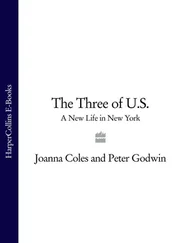So the IPPI took housing prices, and simple sea level rise itself, and added to these two basics the following: an evaluation of improvements in intertidal construction techniques; an evaluation of the speed at which the existing stock was melting; a “change in extreme weather violence” factor derived from NOAA data; currency exchange rates; a rating of the legal status of the intertidal; and an amalgam of consumer confidence indexes, crucial here as everywhere else in the economy, although adding it to the IPPI was a new and controversial move on my part, as it was not a factor in the Case-Shiller. Using this mix of inputs, the IPPI said that in the years immediately after the Second Pulse, the submerged and intertidal’s worth had Case-Shillered down to very near zero, as was only right; it was a devastated time. But that was a retroactive evaluation, and in the year we introduced the index, 2136, we calculated the number to be 47. And it had been rising, unsteadily but inexorably, ever since. That was another key to its success, of course: a long-term bull market makes rich geniuses of everyone involved.
Yet another key was simply the name itself: Intertidal Property Pricing Index. Property, get it? The name itself asserted something that before had been questionable. It was still questionable, but all over this world property had already become somewhat liquefied; property now is just a claim on the yield. So the name was a coup. Very nice. Reassuring. Comforting.
So. Currently the global IPPI was at 104, the New York regional at 116, and both were still trending up faster than the noncoastal Case-Shiller, which was now at 135. And in the end it’s growth, relative value, and differential advantage that matters in determining how well you are doing. So yay for the IPPI!
As for the instruments used for trading on the IPPI, that was just a matter of packaging and offering bonds for sale that went both long and short on the index. We were by no means the only ones doing that; it was a popular investment, with the multiple variables involved making it a volatile high-risk, high-return market, attractive to people who wanted that. Every week there was a splash and crash, as we called it, and then a new method for aerating the submarine world would be announced, something we called a prize and rise. Meanwhile everyone had an opinion on how things were going and how they would go. And investors being so hungry for opportunities, the IPPI was performing well if judged simply by the number of bets being made on it; so well that it did even better, in the classic sort of bandwagon jumping that drives the markets and maybe our brains too: it was doing so well that it did better.
Of course it was true that certain assumptions I had baked into the IPPI needed to stay true for it to stay accurate. One was that the intertidal zone was going to remain legally ambiguous, jarndycing through the courts at Zenoesque speed. Another was that not too many of these once-and-future-and-therefore-present properties fell over too fast. If the rate of melting into the drink did not go exponential, or nova—if it proceeded, even accelerating, at a measurable rate that could be turned into a number that plotted not too hockey-stickistically onto a graph, one could follow that trend line up or down and see other trends and hope to predict futures, and, yes, bet again on that, without the IPPI itself ever cratering even if the actual physical stock did.
Thus my index contained and then concealed some assumptions and analogies, some approximations and guesses. No one knew this better than I did, because I’m the one who made the choices when the quants laid out the choices for quantifying the various qualities involved. I just picked one! But this is what made it economics and not physics. Ultimately the IPPI allowed for people (including WaterPrice) to concoct derivative instruments that could be offered and bought; and these could then be bundled into larger bonds, and sold again. So people loved the index and its numbers, and did not examine its underlying logic too closely. New paper was valuable in itself, especially when rated high by the rating agencies, who had such usefully short memories, like everyone else in finance, when it came to their own absurdly terrible judgment, so the ratings still mattered as a rubber stamp of legitimacy, ridiculous though that was given their history as a service bought by the very people they were rating. So now as always you could get AAA ratings, not for subprime mortgages, obviously bad, but for submarine mortgages, clearly much better! And the fact that all submarine properties were in some sense extremely subprime was not mentioned except as one aspect of the very lucrative risks involved.
A new bubble, you might say, and you would be right. But people are blind to a bubble they’re inside, they can’t see it. And that is very cool if you happen to have an angle of vision that allows you to see it. Scary, sure, but cool, because you can hedge by way of that knowledge. You can, in short, short it. You can, as I had found out by doing it, invent a bubblistic investment possibility more or less by accident, then sell it to people and watch it go long, knowing all the while that it is turning into a bubble; and all the while you can short it in preparation for the time that bubble pops.
Spoofing? No. Ponzi scheme? Not at all! Just finance . Legal as hell.

So, for the previous six months, reading the stats from around the coastlines of the world and trying to calculate all the trends, reading the tea leaves, the engineering journals, everything, including urban folktales, I had come to believe that the moment was approaching when this bubble was going to pop. Some places, like good old Manhattan, had a huge influx of technological innovation and human capital and sheer money, and here we were going to uptake the intertidal and make the best of it. But most of the world was well off the leading edge in all these relevant areas, and as a result, their intertidal was melting faster than it was being renovated. It had been about fifty-five years since the Second Pulse began, forty since it let off, and all over the world buildings were giving up the ghost and slipping under for good. Small buildings, big buildings, skyscrapers—those last fell with a mighty splash, and the market flinched and shuddered in their wakes—very brief flinches, just enough to adjust the IPPI, play the resulting jostle, and angle a few more points into our account—and then the bubble continued to expand. But it seemed like a moment of extreme simultaneous global badness was coming, and more and more I was shorting the very bubble I myself had helped to start in the first place.
What could be more nerve-rackingly cool.
And I was going out with Jojo for Friday drinks, and then maybe a float on the river, high tide at midnight, on a night of full moon, perfect! Oh! Oh!
So I left work and hummed down to Eldorado Equity on Canal and Mercer. Turning onto Canal Canal, as the tourists loved to hear it called, I found it crowded with afternoon traffic as usual, motorboats of every kind jammed bow to stern and thwart to thwart, to the point where more boat than water was visible. You could have walked across the canal on boat decks without ever having to jump, and quite a few flower sellers and mere passersby were actually doing that.
Jojo was waiting on her building’s front dock, and I felt a little spike in the cardiograph. I kissed the dockside with the starboard side of the skater and said, “Hey there.”
“Hi,” she said after a brief glance at her wrist, but I was on time, and she nodded as if in acknowledgment of that. She was graceful stepping along the deck back to the cockpit; looking up at her from the wheel it seemed like her legs went on forever.
Читать дальше













